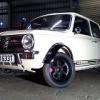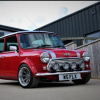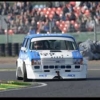Hopefully no-one minds me resurrecting a 5 year old thread, but I noticed in a copy of the 1983 Austin Rover brochure:
Metro, Maestro, Ital, Ambassador, SD1 all say:
"BODY:
All steel unitary construction.
or something very similar.
For Mini, all we get is:
"BODY:
2 door saloon, all steel unitary construction."
which seems very ominous to me! This implies that there was no effort to rustproof the Mini at all, at least not in 1983. In contrast, all the other Austin Rover cars had quite a bit of anti-corrosion treatment (whether or not it was successful).
Why is this? Is it simply because it wasn't possible to budget for this given the Mini's low list price? Or maybe because they knew customers' expectations on corrosion resistance would be fairly low since the Mini was such an old design.
Is it true that Minis came out of the factory with no rustproofing at all?
My 1988 example certainly seems to have no wax at all in the box sections, although thankfully the previous owner did wisely Waxoyl the underside and wheel arches.
Did Minis come out of the factory with body-coloured sills, wheel arches and undersides?
Edited by zero_wlv, 26 August 2018 - 11:47 PM.























